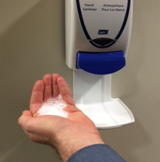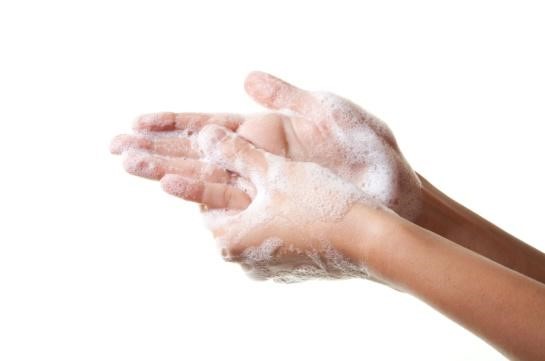Why do I need to clean my hands?

Cleaning your hands (also called hand hygiene) is one of the best ways you can stop germs from spreading. The main way germs spread is by our hands. You can pick up germs almost everywhere, including phones, doorknobs, and railings. You can spread these germs through a hospital, clinic, or other healthcare facility without even knowing it.
Your hands may look clean, but they can still have germs that cause infections. When you forget to clean your hands or don’t clean them well, you can spread germs to other people. You can also spread germs to yourself if your hands aren’t clean and you touch your eyes, mouth, nose, or a cut on your body.
It’s important to encourage your family members, visitors, and healthcare team to clean their hands whenever they visit you or help you with your care. Help stop the spread of germs that cause infections in healthcare facilities.
When do I need to clean my hands?
Always clean your hands:
- before you prepare and eat food
- before you touch your eyes, nose, or mouth
- after you use the bathroom, blow your nose, or cough or sneeze on your hands
- before you have contact with patients or people who live in a healthcare facility (residents) and before you go into their room
- after you have any contact with patients or residents and after leaving their room, unit, and the healthcare facility
Should I use hand sanitizer or soap and water?
You can use hand sanitizer (an alcohol-based hand rub) or soap and water to clean your hands.
Hand sanitizer is best to use when:

- your hands don’t look or feel dirty
- you go into or leave a patient or resident room, unit, and healthcare facility
Follow these steps to clean your hands with hand sanitizer:
- Roll up long sleeves and push up your watch, bracelet, and other items on your wrist.
- Put a palm-sized amount of hand sanitizer on your hands.
- Rub the sanitizer all over your hands, wrists, fingers, fingertips, and thumbs.
- Rub until your hands are completely dry.
Soap and water is best to use:

- when your hands look or feel dirty
- before you eat or prepare food
- after you use the bathroom
Follow these steps to clean your hands with soap and water:
- Roll up long sleeves and push up your watch, bracelet, and other items on your wrist.
- Wet your hands with warm water.
- Put enough soap on your hands to cover them.
- Rub the soap all over your hands, wrists, fingers, fingertips, and thumbs.
- Wash and scrub your hands for 15 to 30 seconds.
- Rinse your hands under warm running water.
- Pat your hands dry with a paper towel.
- Turn the tap off with the paper towel.
When does my healthcare team need to clean their hands?
Your healthcare team follows the “4 Moments for Hand Hygiene” when they care for you. They will clean their hands:
- before they touch you or anything around you, including your clothes and personal items
- before they put on gloves and before they do a procedure, such as starting an intravenous (IV), changing your dressing, caring for your catheter, or preparing your medicine
- after they have contact with your blood, urine (pee), stool (poop), or any of your body
- after they take off their gloves that came in contact with your body fluids (such as changing your dressing or taking your blood for a blood test)
- after they touch you or anything around you
- before they leave your area
If you don’t see a member of your healthcare team clean their hands, you can say, “I didn’t see you clean your hands, would you mind cleaning them?” Your healthcare team welcomes your questions.
Please remind visitors to clean their hands too, so germs don’t get into your room.
By keeping our hands clean, we can all create a safer environment.
